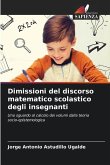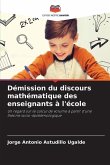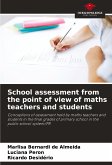The problem of the research is to show how 3D geometry, in particular the calculation of volume, has been overlooked and transformed into a deep arithmetic or algebraic calculation decontextualized. Specifically, the most intuitive notions of the concept, such as 3D representations, shape, size and perspective, are unknown, and the evolution of this topic throughout history is not considered. In order to make the calculation of volume non-linear, and take a significance in the student's life, it is necessary to work based on estimation and measurement, which is not simple, since in itself this content presents its own problematic (Pizarro, Albarracín & Gorgorió, 2018). Freudenthal (1983), performs a phenomenological analysis of volume, emphasizing different aspects of volume related to real situations, such as the manipulation of concrete solids, comparison of volumes and optimization of space. This implies that the calculation and understanding of volume is not only the acquisition of spatial skills, but also in the work of the processes of measuring and estimating.
Bitte wählen Sie Ihr Anliegen aus.
Rechnungen
Retourenschein anfordern
Bestellstatus
Storno








